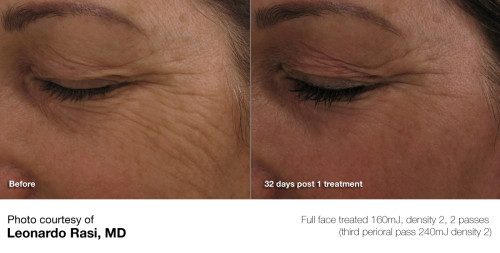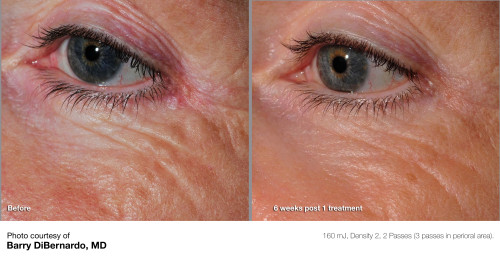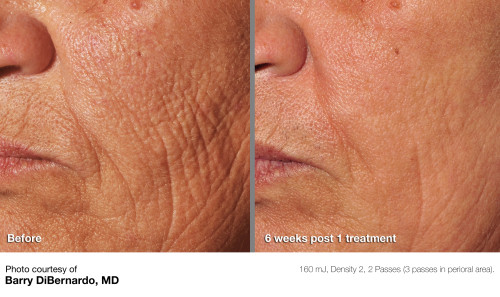Pearl Fractional

What is the Pearl Fractional treatment?
Pearl Fractional is a new, volumizing fractional laser perfected for treating wrinkles and photoaging in as few as one treatment. Pearl Fractional offers the best combination of patient experience and recovery time. Pearl Fractional is used to treat deep wrinkles, photodamage, uneven tone and texture. It will also produce a noticeably smoother, brighter complexion.
What does “fractional”mean? How does the Pearl Fractional treatment work?
Fractional therapy describes a treatment that affects only a fraction or small percentage of the skin. With Pearl Fractional, laser pulses place tiny holes deep in the skin. Columns of damaged tissue are selectively removed, leaving surrounding skin intact. This fractional treatment shortens healing time and stimulates the body’s own natural process for creating new collagen, plumping the skin from below and reversing wrinkles, photoaging and other imperfections.
Frequently Asked Questions
How many treatments are recommended?
Most patients will see significant improvement after just one treatment; however, some patients may require a second treatment to achieve their goals.
Who is a candidate for a Pearl Fractional treatment?
Patients with skin imperfections due to aging and sun damage will benefit from a Pearl Fractional treatment.
What areas of the face can be treated?
Pearl Fractional can treat the entire face and is uniquely effective in the delicate periorbital (around the eyes) and perioral (around the mouth) areas. These areas often show the first signs of aging and can be the most challenging to treat.
What can I expect during the Pearl Fractional treatment?
During the procedure, the laser uses heat to create tiny holes deep in the skin. The process removes sun-damaged tissue and then stimulates the growth of healthy, new skin, full of fresh collagen. This plumps the skin from below, repairing wrinkles, photodamage, enlarged pores, uneven skin tone, uneven texture, and other skin imperfections.
How does a Pearl Fractional treatment feel?
Most patients describe the treatment as a series of fast, hot pinches. A topical numbing cream is applied to the skin prior to treatment to alleviate some discomfort. Practitioners may choose to augment topical creams with other medications based on patient need.
When will I see results? How soon can I wear make-up?
Many patients see improvement one week after treatment. Maximum results are visible in one to three months. Patients may apply make-up five days after treatment.
What can I expect after a Pearl Fractional treatment?
After treatment, the skin looks sunburned and may be slightly swollen. Patients report little or no discomfort post treatment. Your physician will recommend post-treatment care, including NeoCutis Bio-Cream to aid healing and Aquaphor to keep the skin moisturized for approximately four to five days. In addition, you should limit sun exposure and wear protective clothing.
Can Pearl Fractional be part of a combination therapy treatment?
Many patients have a Pearl Fractional treatment in combination with other cosmetic therapies. These include other laser and light procedures, such as Pearl, Laser Genesis, Titan and IPL, as well as injectable treatments such as Botox, Juvederm, and Radiesse. Combination treatment options should be discussed with your clinician or doctor.
How does Pearl Fractional compare to other fractional laser treatments?
Pearl Fractional’s unique laser wavelength offers a safe but intense treatment to reverse the signs of aging. This combination gives patients dramatic results in a single treatment with approximately one week of recovery. Other fractional devices require more treatments than Pearl Fractional, and may not be as effective in treating deep wrinkles.
* Disclaimer: Individual results may vary. The statements on this website and all affiliates have not been evaluated by the FDA. Products mentioned on this website are not intended to diagnose, treat, cure or prevent any disease and do not replace medical advice. Advice on treatment or care of an individual patient should be obtained through consultation with a physician or trained health care practitioner who has examined that patient or is familiar with that patient's medical history.



